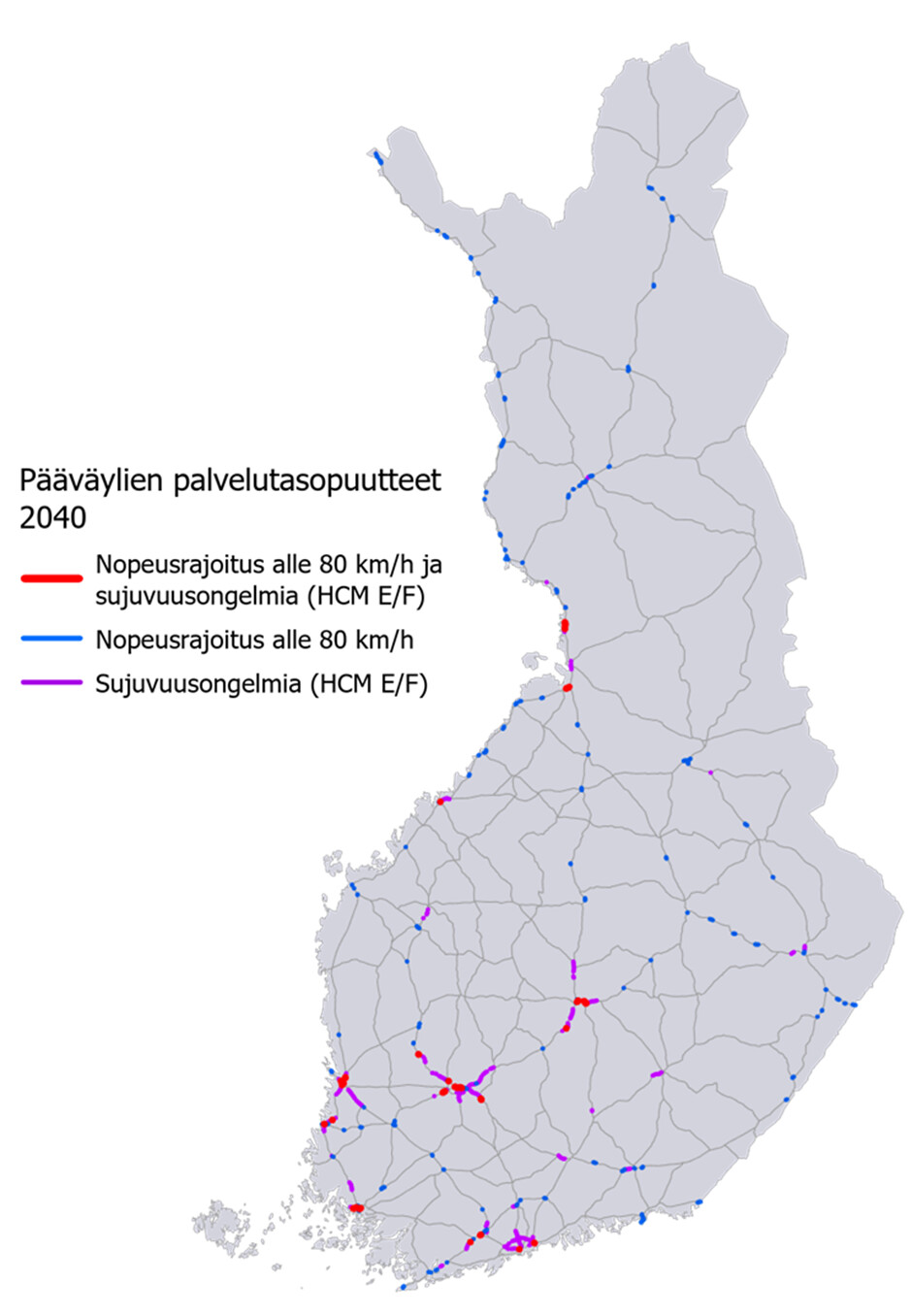This situational picture provides information about the service level of Finland’s arterial road network and service level deficiencies by route. The situational picture is generally updated once a year. The information is produced by the Finnish Transport Infrastructure Agency. The information is part of the strategic situational picture of the Finnish transport network.
When assessing the service level of highways, it should be noted that the arterial route decree specifies some key service level objectives, but does not cover the grounds for highway improvement needs comprehensively. According to the Highways Act, highways are upgraded when necessary for general traffic needs or to eliminate or reduce adverse impacts arising from traffic or when required for land use. The service level requirements in the arterial route decree are primarily directed at traffic needs. Whereas land use needs, traffic safety and the reduction of environmental damage caused by transport are not addressed.
Most significant service level deficiencies in the arterial route network in 2020
The reviews of the service level deficiencies on arterial routes are based on primary data from 2019. The reviews will next be updated in spring 2022 based on the primary data from 2021.
The arterial routes have 213 km of sections of road with a defective service level due to the speed limit of less than 80 km/h. Lower speed limits can be found in urban areas and urban settlements as well as near roadside residential developments and intersections, in particular.
Issues with traffic flow, i.e. repeated weekly congestion, occur on 141 km of road. Congested sections of road are usually entry routes to cities or ring roads. Traffic flow issues are measured as the HCM service level of the hundredth busiest peak hour of the year. HCM class E (poor) or F (very poor) refer to an extremely congested and slow traffic flow. The hundredth peak hour indicates that the issue is repeated roughly twice a week.
The following connections have the most service level deficiencies:
Most significant safety deficiencies in the arterial route network in 2020
The reviews of the safety deficiencies on arterial highway routes are based on primary data from 2019. The reviews will next be updated in spring 2022 based on the primary data from 2021.
There are 118 km of road on arterial routes with significant traffic safety deficiencies, with a heightened likelihood (per kilometre travelled) to have an accident resulting in personal injuries and on which plenty of personal injury accidents occur (per road kilometre).
A significant road safety deficiency is defined as the risk in relation to vehicle mileage resulting in accidents to persons (HVJO), or the HVJO level exceeding 5.5 accidents per 100 million vehicle kilometres, and the risk in relation to road length, or the HVJO frequency exceeding 12 accidents per year per 100 road kilometres.
Most significant service level deficiencies in the arterial route network in 2032
The reviews of the service level deficiencies on arterial highway routes are based on primary data from 2019. The reviews will next be updated in spring 2022 based on the primary data from 2021.
By 2032, the volume of traffic on the arterial routes will have increased to generate traffic flow issues, i.e. congestion will be repeated weekly on 342 km of road. The assessment takes investments that have already been decided on into account, but does not observe new development investments. There are still speed limits of less than 80 km/h on 213 km of road.
In terms of the entire arterial network of highways, there will be no significant traffic flow issues. Some connections in the arterial routes can, however, start to suffer from quite severe traffic flow issues as traffic volumes go up. Traffic flow issues are expected especially in urban areas in Helsinki, Tampere and Jyväskylä.
The following connections have the most service level deficiencies:
